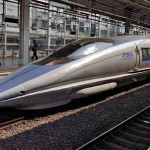Bullet trains in Japan zooming back to life after quake
Bullet trains in Japan which were disabled during the devastating earthquake are back up and running again after engineers worked round the clock for railway repairs.
Officials announced that bullet train services will resume tomorrow just in time for spring holiday season. JR East, the largest railway operator in the world, had to fix some 1,200 points of damage, including train stations and tunnels.
The Tokyo-based company lost 58.7 billion yen for the year ended March 31 and suffered a massive loss 59 billion yen in sales largely because of the quake.
Locally called Shinkansen, the bullet train network of Japan carried 88 million passengers for the past year. In contrast, Amtrak, the U.S. railway operator, carried 3.2 million passengers on its high-speed trains and 29 million passengers overall for the year ended September 30.
Japanese engineers scrambled to repair key segments of the damaged bullet train line as soon as possible after the earthquake and tsunami. The network of high-speed trains is considered a vital transportation service in Japan.
JR East resumed the Tokyo-Fukushima route services in early April. Operations to Sendai, which was the hardest-hit region, resumed this week. The Tokyo-Shin-Aomori segment will resume tomorrow, officials said.
The urgency of the resumption of bullet train services was highlighted by the upcoming Golden Week holiday period.
JR East may have averted additional damage to its railway infrastructure because it doubled its funding to 17.4 billion yen for safety projects last year.
One of the safety mechanisms that worked was the automatic shutdown of 27 bullet trains when sensors detected the early rumblings of the quake, preventing passenger deaths.
